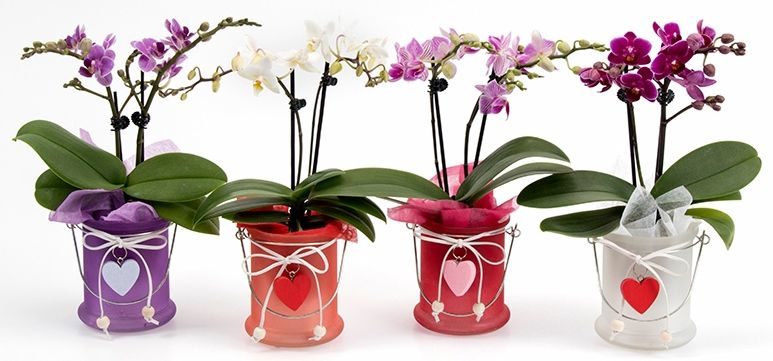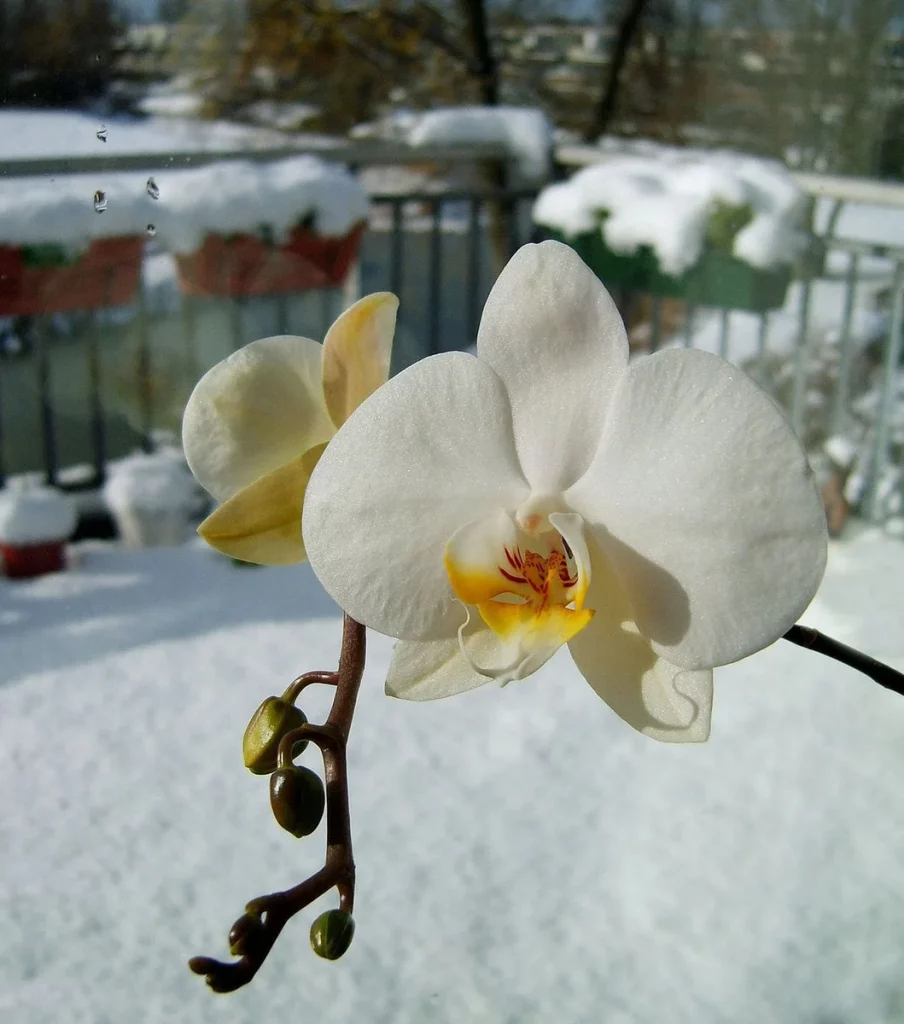Whatever orchid you want to decorate your home with, this exotic plant will delight with flowering only if properly cared for. Let’s find out what the Purple Orchids need to make them bloom well
Purple Orchids are becoming more and more common in our homes. Novice growers prefer the simplest phalaenopsis and dendrobiums, and after gaining experience, they begin to tame the luxurious Wanda Orchids or the very capricious Cattleya Orchids.
Purple Orchids do not forgive cold, drafts, poor-quality water, improper fertilizers, and forgetfulness of their owners. In general, beauties need the whole complex of care for Purple Orchids.
We will tell you about the classic care of Orchids in the example of Purple Orchids these are the most popular plants of this group.
Table of Contents
Useful Information About Purple Orchids Care
| Temperature | During the day-23°C, at night-18°C |
| Air humidity | Constantly high |
| Illumination level | High, but the sun’s rays should be diffused |
| Soil | Specialized soil consisting mainly of pine bark |
| Waterings | Regular, warm soft water |
| Top dressing options | Regular between Bloom Waves. |
How To Take Care Of Blooming Purple Orchids After Buying Them In The Store
No matter how outwardly healthy and beautiful this plant may be, immediately after purchase, the Purple Orchids are quarantined for 2 weeks – in a bright, warm place, isolated from other domestic plants. During this time, Purple Orchids are monitored for pests and diseases, sprayed daily, and a new transparent pot and special soil are prepared.
After quarantine, the Purple Orchids are given a warm shower and planted in a new pot in a special soil, 80% of which is pine bark measuring 1×1 cm. Put them in a warm and bright place. It is very important that even when the plants are ventilated, they do not suffer from drafts!
The first watering after transplantation is carried out in 4 days.

The plant should be transplanted even during quarantine if rotting roots are visually detected, and only then continue to be kept in isolation. Be prepared that after transplanting (and this is a big stress for the plant), the Purple Orchid may lose some of its flowers.
The Purple Orchid will delight you with a long and lush flowering if it is provided with proper placement in the house and high-quality care.
Watering The Purple Orchid

Proper watering is already half the success. With excessive moisture, the roots begin to rot, with excessive dryness they die.
The best method of irrigation is immersion. That is, a pot with an orchid is placed in a deep basin filled with soft settled water, ideally rain or snow, hard tap water should preferably be boiled. The water temperature should be 22-28 °C. The duration of such watering is 20 minutes. Then the pot is placed on a tray and allowed to drain the excess water.
In summer, in hot weather, Purple Orchids are watered about 1 time a week, in winter, when kept in a cool room (night temperatures are about 18 °C) – 1-2 times a month.

During flowering, watering in summer can be less frequent, up to 1 time in 2 weeks, it is important that the substrate does not dry out, but also does not become swampy.
For better air exchange and quick care of excess water, experienced flower growers make additional holes in plastic pots.
Air Humidity
Humidity is very important for Purple Orchids. In dry areas, use humidifiers or put containers with water next to plants. Regular spraying with soft water is useful, but it is important that drops do not fall on the buds. During flowering, you can not rearrange the flower, if you take it away for watering or showering, you must return it strictly to its original place with the same orientation to the light.
First of all, it is necessary to moisten the air more often until the buds begin to bloom. When fully dissolved, you can not spray on the flowers, as they will be covered with ugly spots that spoil the appearance of the flower.
During irrigation by immersion, it is recommended to arrange a warm shower for the Purple Orchids, after which it is necessary to thoroughly wet the water in the axils of the leaves.
In winter, once every 2 weeks, a shower with warm water is recommended-45-55°C.
To maintain optimal temperature and humidity, plants and pots can be “packed” in a transparent material.

Top Dressing
Purple Orchids need regular top dressing. But they are carried out before the first bud appears on the peduncle. For a novice grower, the best option is liquid fertilizers. Do not exceed the dosage – you can cause a root burn. Therefore, always strictly follow the instructions of a particular fertilizer. Always apply fertilizer only after watering.

The first top dressing is carried out 1 month after the transplant and then until the first bud, the Purple Orchid is fed 2 times a month. If there is a need to feed the plant during flowering (for example, several peduncles appear at intervals on an orchid), apply a fertilizer that does not contain nitrogen.
Protection From Diseases And Pests
Purple Orchids with mistakes in care can get sick or suffer from pests.
If rotting of roots or leaves is detected, it is necessary to cut off all damaged areas and treat the sections with a strong solution of potassium permanganate, and when the sections dry out, spray with a fungicide twice with an interval of 7 days.

The appearance of pests is an urgent signal to move the Purple Orchid to quarantine and spray it with Actellic solution three times at an interval of 5 to 6 days.
How To Care For Purple Orchids After Flowering
In orchid care, an important moment comes after the end of flowering. The Purple Orchid needs to recover. Therefore, the peduncle is cut completely if the plant is healthy and well – developed-up to the first living bud, more precisely 2 cm above it. In the second method, a new peduncle will begin to grow from a live bud.

The end of flowering can be used to transplant and rejuvenate the old plant, as well as to start a new cycle of top dressing.
Your Questions About The Purple Orchids
Q1: How To Care For Purple Orchids In Winter?

In winter, there should be a stable comfortable temperature (18-23°C), regular airing, but without drafts, good illumination with additional illumination by Phytolamps, protection in cold weather from cold glass and a warm window sill, watering with warm water in accordance with the requirements of a specific type, high humidity, but without spraying, fertilizing in a reduced amount a dose of 4 times.
Q2: How To Care For Purple Orchids So That They Bloom?

Purple Orchids need systematic top dressing for flowering. Be sure to move the pot with the plant to a brighter place, but not in direct sunlight.
If the care is proper and the plant is healthy but does not throw out flower stalks, you can stimulate flowering with hormones – treat the area of appearance of flower stalks with Cytokinin paste.
Q3: When Do I Need To Transplant Purple Orchids?

Purple Orchids are transplanted after purchase in the store. And then every spring. Plants are planted in a transparent pot with drainage holes, literally 2 cm larger in diameter, and a special soil made of pine bark. When transplanting, gently shake the roots from the old soil, remove dry or blackened roots, and treat all sections with a fungicide.


